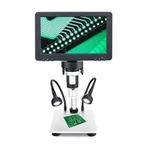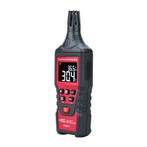Common inspection methods for soldering points of electric soldering irons
When we finish the welding work. It is necessary to inspect the quality of solder joints, repair, and repair welding. Usually, solder joints that meet the following standards are considered qualified solder joints:
(1) The solder joints are in the shape of an inner arc (conical).
(2) The overall solder joints should be perfect, smooth, free of pinholes and rosin stains.
(3) If there are leads and pins, the length of their exposed pins should be between 1-1.2MM.
(4) The shape of the part feet shows that the tin has good fluidity.
(5) Solder covers the entire tinning position and parts feet.
The solder joints that do not meet the above standards are considered as unqualified solder joints and need to be repaired again.
(1) False welding: It seems that it is welded but it is not welded. The main reason is the pad and pin
dirty. Insufficient flux or insufficient heating time.
(2) Short circuit: parts with pins are short-circuited by excess solder between the pins. It also includes residual tin slag that shorts pins to pins.
(3) Offset: due to inaccurate positioning of the device before soldering, or mistakes made during soldering, the pins are not within the specified pad area.
(4) Less tin: Less tin means that the tin point is too thin to fully cover the copper skin of the part, which affects the connection and fixing effect.
(5) Too much tin: The part feet are completely covered by tin, that is, an outer arc is formed, so that the shape of the part and the pad position cannot be seen, and it is impossible to determine whether the part and the pad are well tinned. .
(6) Solder balls and tin slag: Excess solder balls and tin slag attached to the surface of the PCB will cause small pins to short circuit.










